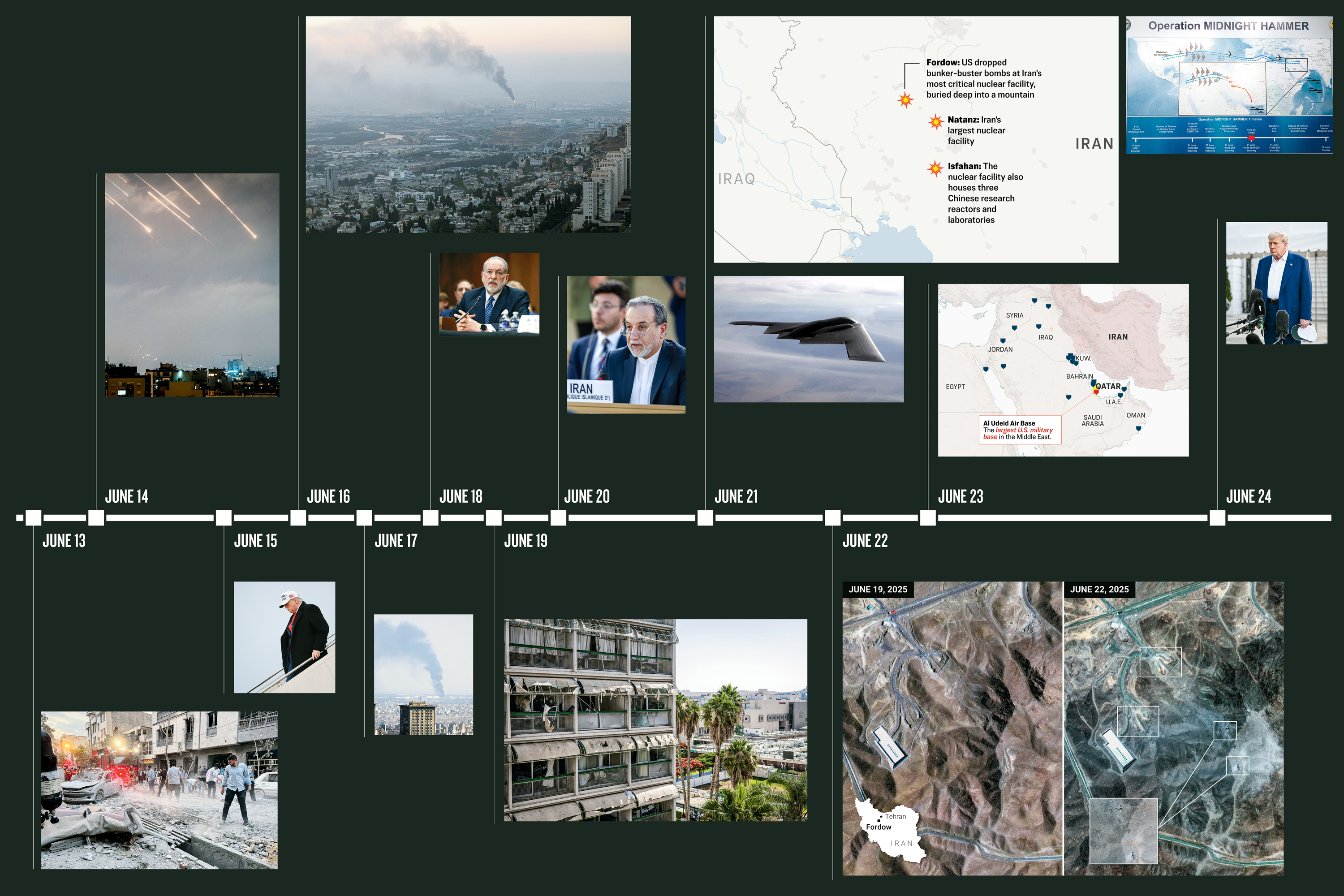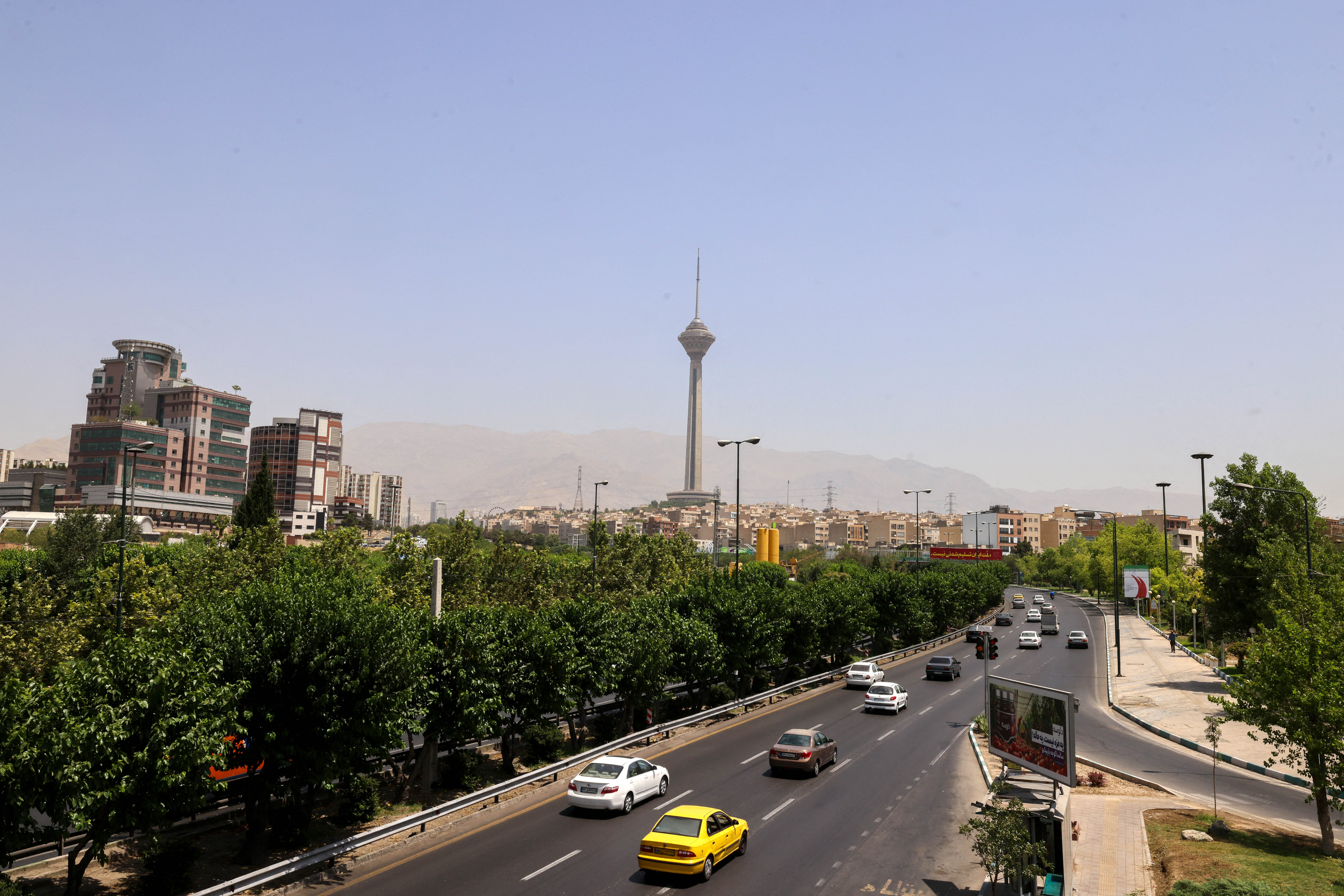



Illustration by The Epoch Times, Getty Images, U.S. Air Force photo by Bobbie Garcia, Reuters, Shutterstock
After trading fire for about 12 days, Iran and Israel have agreed to wind down a conflict that set the Middle East on edge.
The conflict began amid an impasse over Iran’s nuclear program. U.S. President Donald Trump had pressed Iran to agree to abandon its nuclear programs. While Iran has insisted it’s not pursuing nuclear weapons, Iranian negotiators had signaled reluctance to give up Iran’s uranium enrichment capabilities.
In the early morning hours on June 13, Israeli warplanes launched a surprise attack aimed at crippling Iran’s nuclear program and offensive military capabilities. Following the attack, Iranian representatives pulled out of talks set for June 14 with U.S. counterparts in Oman.
